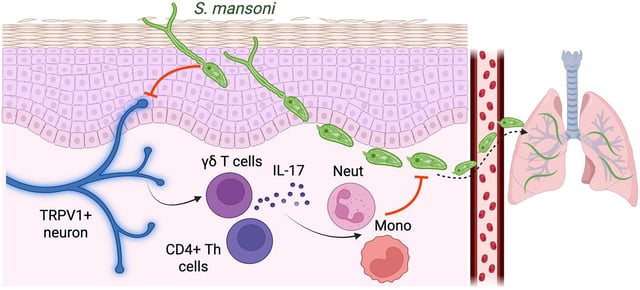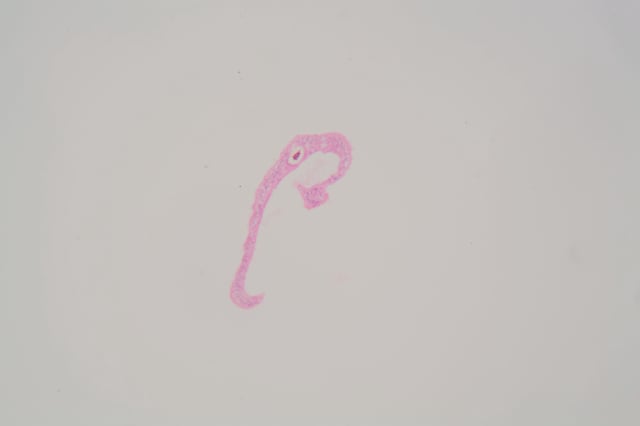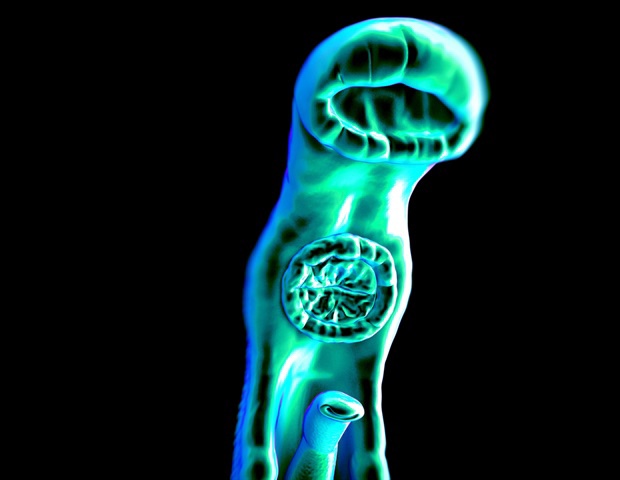Overview
- Mouse studies in The Journal of Immunology show that Schistosoma mansoni larvae reduce TRPV1+ neuron activity in the skin to dampen pain and itch signals during penetration.
- Activation of TRPV1+ neurons normally triggers a rapid influx of gd T cells, monocytes and neutrophils that create inflammation and block larval entry.
- Researchers now aim to isolate the helminth-derived molecules responsible for neuronal suppression and map the specific immune-cell interactions involved.
- The work suggests this sensory-neuron silencing is an evolved immune-evasion strategy that enhances parasite survival.
- Identifying these parasite factors could inform development of non-opioid analgesics and topical agents to prevent schistosomiasis, though human relevance remains untested.


